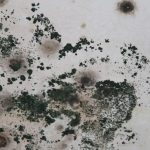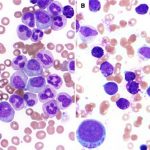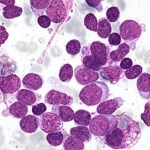Benzene is a colorless, sweet smelling chemical that has been linked to a number of health problems and side effects. This is a chemical that can be found naturally occurring in the environment.
It is also used in a variety of man-made products, such as solvents, paints, dyes, in the petroleum industry, and in a number of chemical and household products.
This chemical has been linked to a number of diseases, including various forms of leukemia. Aplastic anemia is just one of the diseases that can result from prolonged and high level exposure to benzene.
Aplastic anemia is where the bone does not produce adequate levels of red and white blood cells or platelets.
This causes a drop in hemaglobin, which stems from reduced red blood cells; an increased risk of infection, caused by reduced white blood cells; and blood clotting abnormalities, caused by the reduction in platelets.
There are various symptoms that can relate the a reduction of lack of these blood properties, and these include:
- Symptoms of lack of red blood cells: tiredness, a very pale complexion, and shortness of breath.
- Symptoms of lack of platelets: excessive bleeding, a tendency to bruise easily, and a delay in healing.
- Symptoms of a lack of white blood cells: increased infections, bone or joint pain and discomfort, and feverishness.
The causes and symptoms
In addition to those subjected to prolonged or high level toxic exposure, such as exposure to Benzene, there are also others that can be at risk of getting aplastic anemia.
Those with a history of infectious diseases, a history of taking certain medications including antibiotics, and a history of an autoimmune disease can all be susceptible to this illness.
The condition can also be secondary, which means it can stem from another condition. Aplastic anemia can be inherited.
The symptoms associated with this disorder are largely non-specific, which means that they could be attributed to a wide range of medical and health conditions.
Not all symptoms will necessarily be experienced by every sufferer of aplastic anemia. Some of the symptoms include:
- pale skin coloring to an abnormal level
- blood in stools
- nose bleeds
- tender sinuses
- an enlarged liver or spleen
- oral thrush symptoms
- bleeding gums
- fever
- headaches
- dizziness
- nausea
- shortness of breath
- increased bruising
- fatigue
If you have been exposed to benzene and experience any of these symptoms it is advisable to seek medical assistance as soon as possible.
Using a blood or bone marrow sample, a physician can determine whether you are suffering from aplastic anemia.
Once this has been determined, a course of treatment can be determined, and this will be based on a number of factors.
Some of the considerations taken into account when deciding upon appropriate treatment include the extent of the disease, the patient’s age, the patient’s health and medical history, and the patient’s own preference.
Some of the treatment types that may be considered include drug therapy to regulate normal cell and platelet production, antibiotics, blood transfusion, immunosuppressive therapy, and hormone therapy.
Upon diagnosis the doctor will discuss the options with regards to therapy with you, enabling you to make a more informed choice together.






